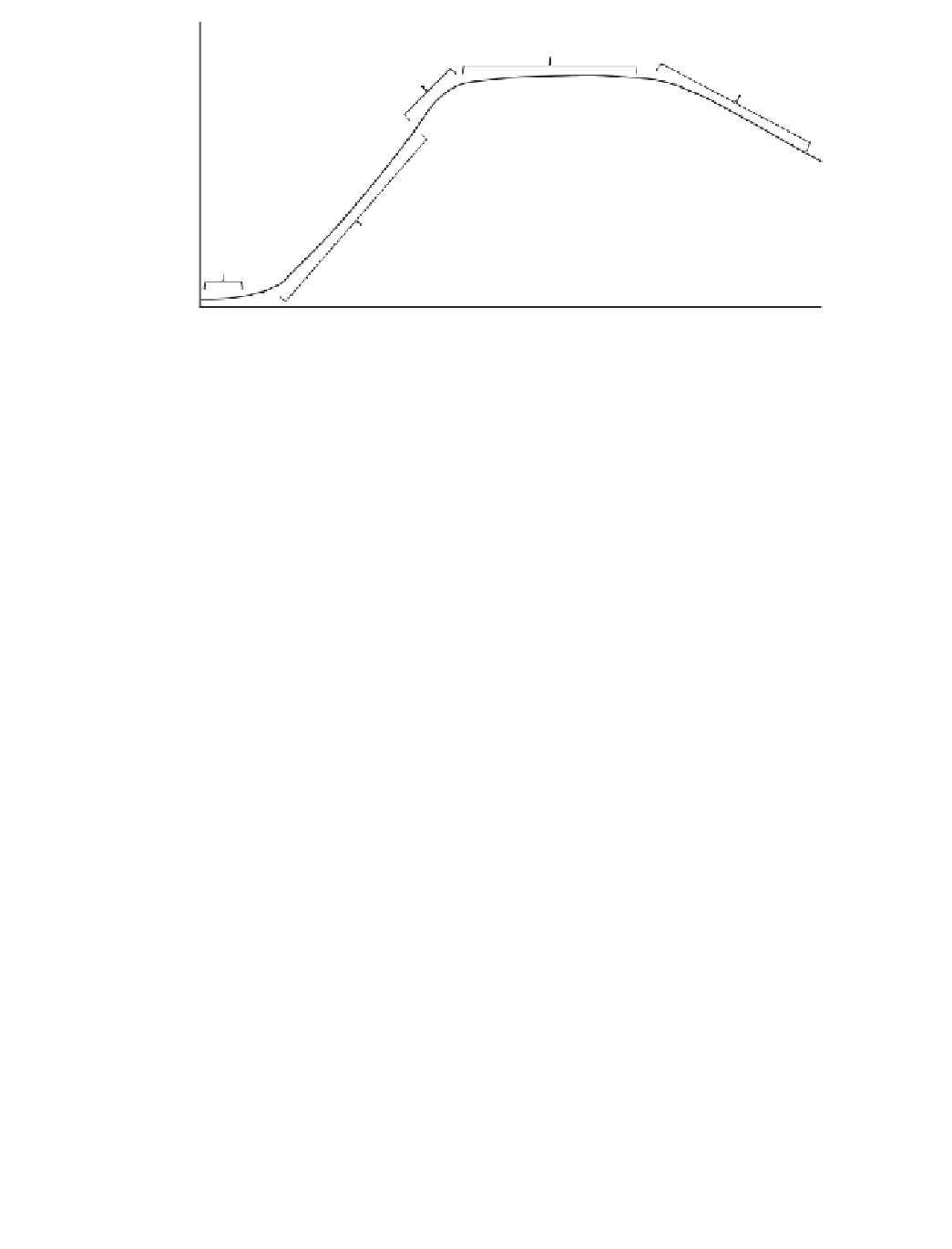Biomedical Engineering Reference
In-Depth Information
Stationary phase
Postexponential growth
Death phase
Exponential growth
Lag phase
Fermentation Time
Figure 7.4
A typical growth curve for batch fermentation.
After the lag phase, cells begin multiplying. This phase of growth is known as the
exponential phase. Growth rate varies greatly among different organisms and reactor condi-
tions. The specific growth rate (
μ
g
) can be modeled as:
μ
g
= ln (X / X ) / t
0
where X = the cell mass concentration at time t, X
0
= the initial cell mass concentration, and
t = time. The specific growth rate has units of t
-1
. A common means of obtaining
g
is to plot
ln (X/X
0
) vs. time and calculate the slope of the linear portion of the curve. Another com-
mon way to characterize microbial growth rates is by the doubling time (t
d
), which equals
the time required for actively growing cells to double in concentration:
μ
t
=ln 2/
μ
d
g
Many valuable fermentation products are produced during the exponential phase. These are
known as growth associated products.
After nutrients and substrate begin to diminish, cell growth decelerates and enters a
period of no apparent growth. This phase is known as the stationary phase. In the stationary
phase, the rate of growth equals the rate of cell death and no net change in cell mass
concentration occurs. Fermentation products produced during the stationary phase are
known as non-growth associated products.
If additional substrate is not added to the culture, the rate of cell death becomes greater
than the rate of growth. This is known as the death phase. Additional substrate and inoculum
must be added to restart the culture.
7.4 REACTOR DESIGN
Bioreactors are designed to enhance cell growth and maximize the conversion of substrate
to desired product by providing a controlled environment for biological processes. The
selection of a specific bioreactor design requires understanding of basic microbiology and




Search WWH ::

Custom Search